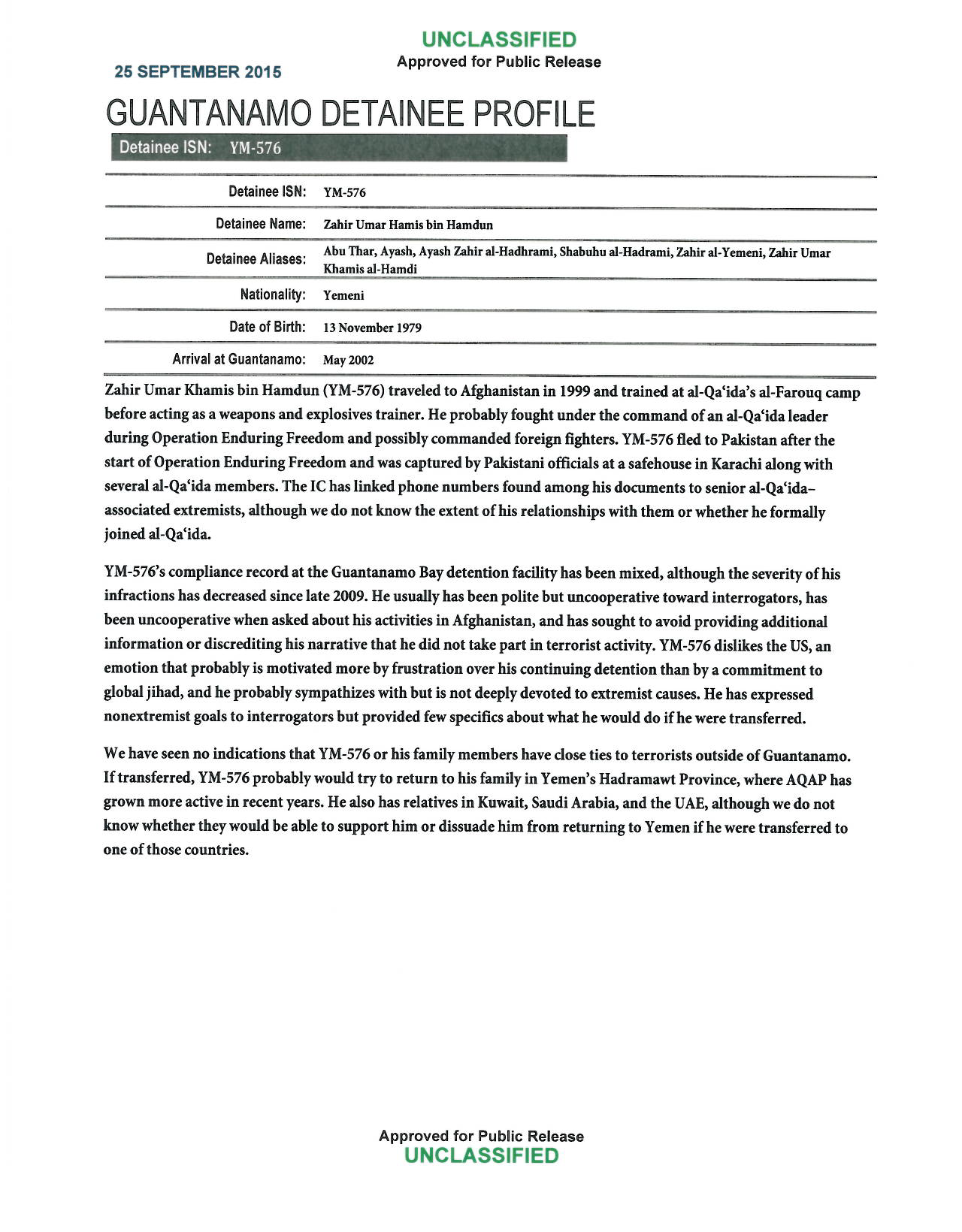PORT-AU-PRINCE, Haiti (AP) – Fifteen prisoners at Guantanamo Bay have been released to the United Arab Emirates in the single largest transfer of detainees during the Obama administration.
The release of 12 Yemeni nationals and three Afghans comes amid a renewed push to whittle down the number of detainees held at the U.S. base in Cuba. The men have been cleared for transfer by U.S. government departments and agencies.
The Pentagon says 61 detainees remain at Guantanamo.
President Barack Obama has been seeking to close the detention center amid opposition from Congress.
Naureen Shah is Amnesty International USA’s director of national security and human rights. She says Monday’s transfers are a “powerful sign that President Obama is serious about closing Guantanamo before he leaves office.”
****  Photo from Miami Herald, click here for more details.
Photo from Miami Herald, click here for more details.
ABC: The latest batch of released prisoners had mostly been held without charge for some 14 years at Guantanamo. They were cleared for release by the Periodic Review Board, comprised of representatives from six U.S. government agencies.
The UAE successfully resettled five detainees transferred there last year, according to the Pentagon.
Lee Wolosky, the State Department’s special envoy for Guantanamo’s closure, said the U.S. was grateful to the United Arab Emirates for accepting the latest group of 15 men and helping pave the way for the detention center’s closure.
“The continued operation of the detention facility weakens our national security by draining resources, damaging our relationships with key allies and partners, and emboldening violent extremists,” Wolosky said.
Obama has been seeking to close the detention center amid opposition from Congress, which has prohibited transferring detainees to the U.S. for any reason. The administration has been working with other countries to resettle detainees who have been cleared for transfer.
According to Amnesty, one of the Afghans released to the UAE alleged that he was “tortured and subjected to other cruel treatment” while in U.S. military custody. The man, identified only as Obaidullah, was captured by U.S. special forces in July 2002 and allegedly admitted to acquiring and planting anti-tank mines to target U.S. and other coalition forces in eastern Afghanistan.
In clearing him for transfer, the review board said he hasn’t expressed any anti-U.S. sentiment or intent to re-engage in militant activities. However, a Pentagon detainee profile also said he provided little information and they had little “insight into his current mindset.”
One of the Yemeni men sent to the UAE was identified as Zahir Umar Hamis bin Hamdun, who traveled to Afghanistan in 1999 and later apparently acted as a weapons and explosives trainer.
A Pentagon profile from September 2015 said he expressed dislike of the U.S., which they identified as “an emotion that probably is motivated more by frustration over his continuing detention than by a commitment to global jihad.”
***** One such detainee profile:

